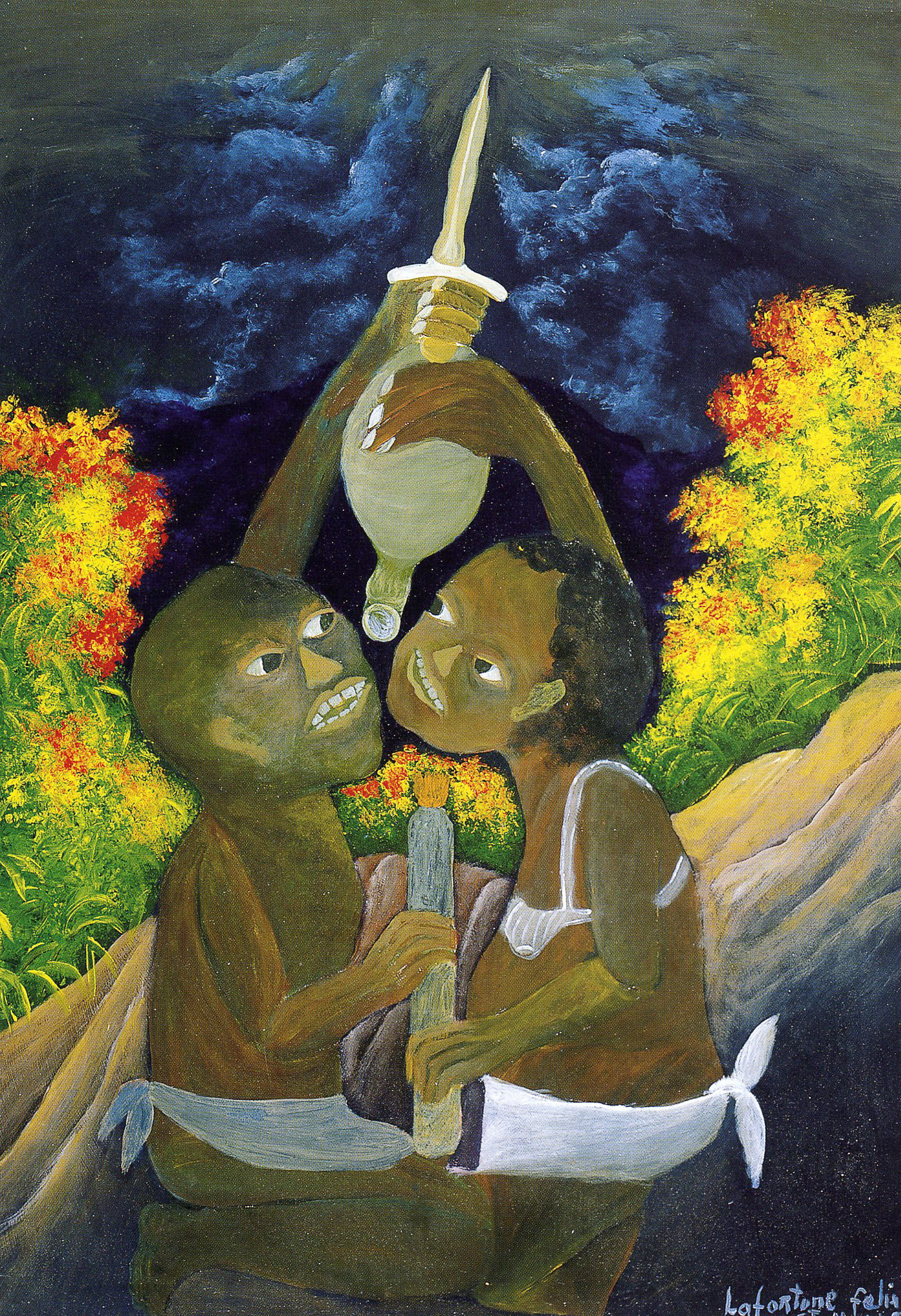acrylic on board
32 x 22.5 in

Twins sit on rocky ground in this painting. The sky is dark and a storm is brewing. Wherever there are twins, people need to be careful. This is a sensitivity that Haiti shares with many of the people of West Africa. Twins need to be treated evenhandedly. What is given to one must be given to the other, and in the same measure. Twins are hypersensitive and they are prone to jealousy. Also, they tend to go bad quickly, like fruit left on the ground. If one twin dies at birth, he or she is said to have been “eaten” in the womb by the other twin. Twins can even turn on their own parents and kill them. Many folktales circulate in Haiti about twins in which one is exceptionally good, and the other exceptionally bad.
Sitting on the left of the female twin in Lafortune Felix’s painting, the boy raises his left hand. He appears to be summoning spirits with his knife, a common Petwo ritual gesture. In the language of Vodou his is “working with his left hand”, a description often given to excessive Petwo ritualizing. In the meantime, the female twin sits on the right, pouring a libation onto the earth. She is feeding the ancestors, giving them something to drink, a gesture that every Haitian who serves the spirits performs automatically, and not only in ceremonial contexts, but also when opening a new bottle of rum or taking a fresh cup of water. The libation is poured with her right hand.
In Vodou, right and left are associated with Rada and Petwo spirits, the two major pantheons of Vodou spirits in urban Haiti. The left hand, and the Petwo spirits, are used for the affairs of the larger world, the world beyond the extended family, and for those things that have to do with money and power. The right hand is for Rada work. Working with the Rada spirits, also known as root spirits or African spirits, keeps people in touch with the Vodou spirits, who live in Ginen, a water parallel world below the earth.
It is significant that Lafortune Felix’s twins are not in combat. They represent two sides of the coin of Vodou spiritual activity, two dimensions of human potential. The Vodou spirts, like those who serve them, are understood to have both constructive and destructive sides. In the Vodou perception of things, both of these primal energies must be recognized in the spirits and both must be “served” in them, just as both must be recognized and attended to in the self.
Brown, Karen McCarthy. Tracing the Spirit: Ethnographic Essays on Haitian Art: from the Collection of the Davenport Museum of Art. The Davenport Museum of Art, 1995.